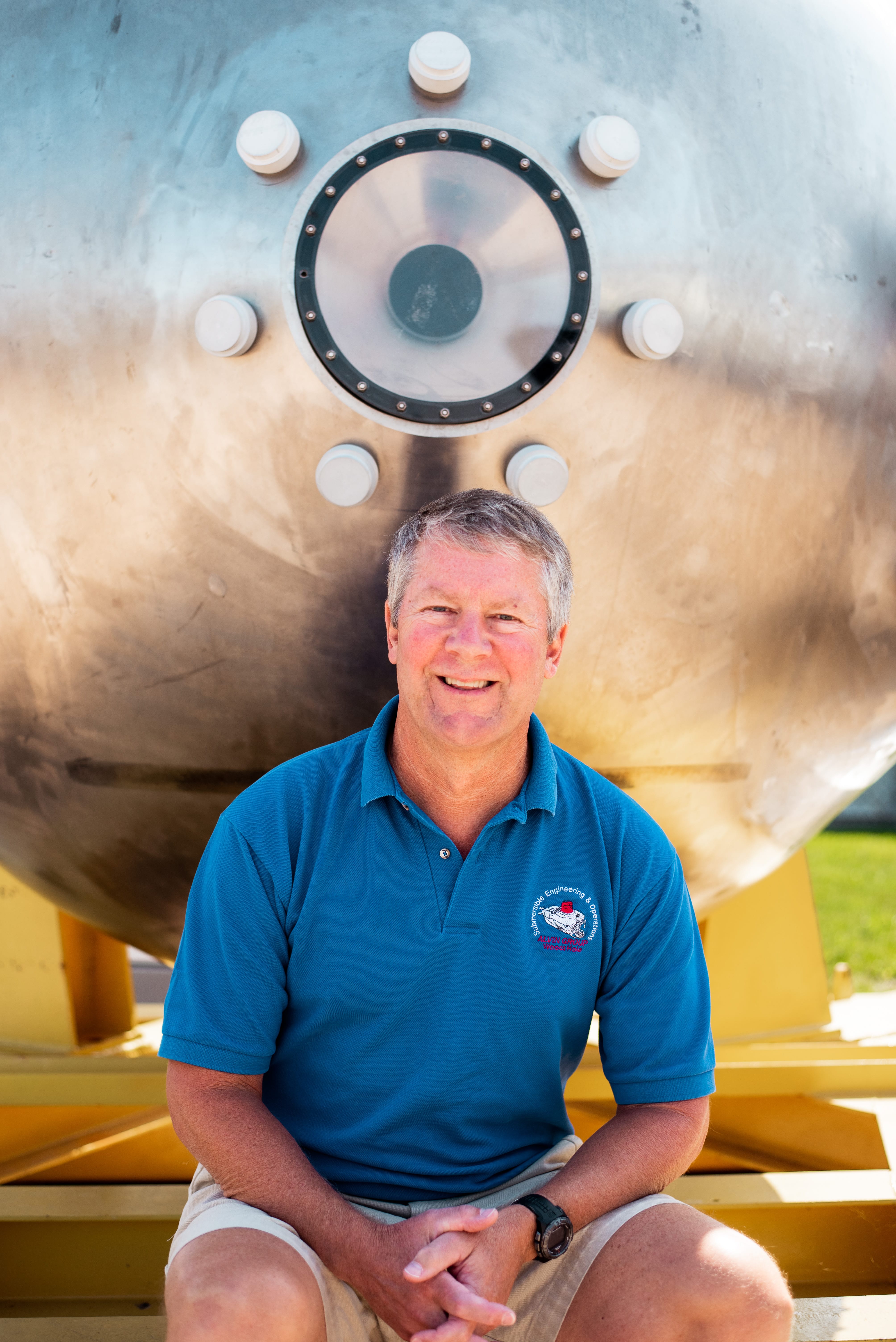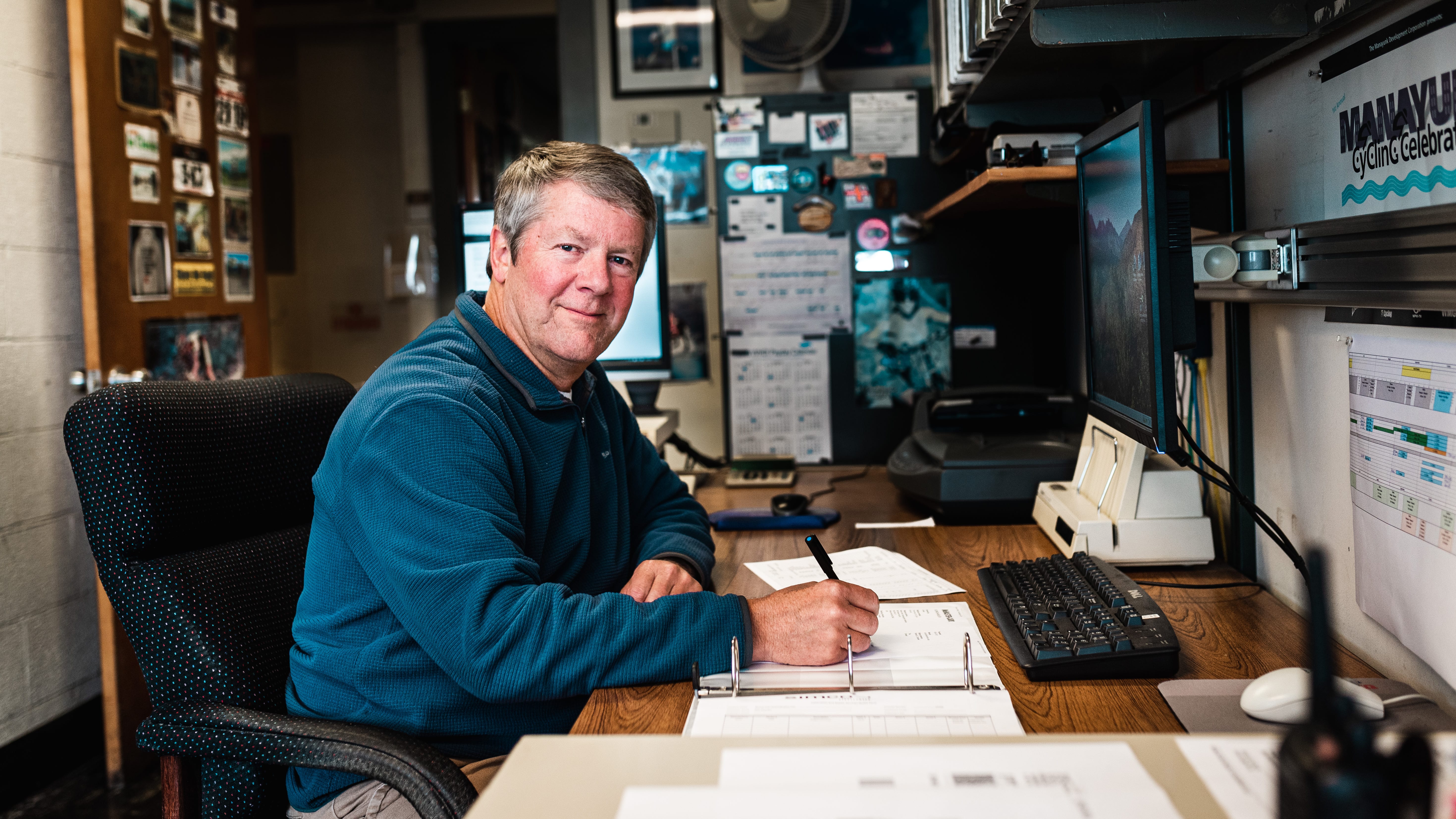The “sub” text of 45 years at Woods Hole Oceanographic Institution
Rick Chandler has made a career out of managing submersible operations at WHOI
By Daniel Hentz | October 29, 2019
Rick Chandler is the submersible engineering and operations administrator for the Alvin Group at Woods Hole Oceanographic Institution. In a career spanning over 45 years, Chandler has cultivated a rich knowledge of submarine operations at WHOI, from working in the machine shop to deploying Alvin at sea. In his formative years, he provided operational support to members of Robert Ballard's research team in observing the wreck of the Titanic—a transformative milestone for the institution. Today, he continues to manage the materials and permissions necessary to ready Alvin for deep-sea exploration.
How did your journey into oceanographic work begin?
I went out with one of the SEA vessels when I was 16 years old. My father, who was an educator, met the director of that program at a conference and sent me on one of those cruises.
Over the course of two months, we sailed from San Juan, Puerto Rico, through the Panama Canal to the Galápagos and back on a 100-foot staysail schooner. Back then we were one of the last vessels to go there before the Ecuadorian government restricted access to the islands. My instructors put us ashore to count green sea turtle eggs. There were maybe five or six of us, a barrel of water, some food, and a tarp to serve as a sun shade. We had no communication. They’d just drop us off, sail away and come back five days later to pick us up. It was so cool to be given that responsibility as a 16-year-old.
That’s when I fell in love with the ocean. I wanted to be near it for my whole career after that.
I went to Bowdoin College in Maine and got a degree in geology. But I found out pretty quickly that my skills lay in administration and organizational work, rather than scientific. I was happy to get out of school and start working. I officially started at WHOI in 1974, beginning in the summers while I was still in college.
The first two summers I came to Woods Hole, I was helping to build a giant sediment corer that a geologist named Charlie Hollister had devised. He had me down in the machine shop, making huge metal things. I was happy as a clam. After a while, I started doing the organizational work for him to prepare the cruise itineraries for a sediment transport research program called HEBBEL. In 1987, I was offered the job as Alvin Operations Coordinator. I would go to sea and organize whatever went over the side, running the deck and making sure all the instruments were recovered safely.
What does your typical day in the Alvin Group look like?
We’re primarily supporting the submarine and our operations team at sea.
This means getting clearance from the Navy, so they know where we are and we don’t have any black boat interactions with Alvin. It also means ordering supplies that the sub uses on each dive: everything from the steel ballast plates, to the oils that we use to lubricate the inner mechanics, all of the electronics, the mechanical fasteners—you name it. There are a lot of pieces in the submarine that have to be replaced periodically.
That’s primarily my job, to make sure all of that material gets ordered and shipped out to the correct port that the crew will be arriving in next.

How do you determine whether Alvin is ready for deep-sea operation?
Every three to five years we do what’s called an overhaul. We strip the submarine right down to its titanium frame, replace anything that looks worn, and put it all back together. In 2020, we will be continuing an upgrade that we did from 2010 to 2013, where we started to migrate the submarine systems to a deeper depth capability.
Currently the sub is verified to operate at 4,500 meters deep, and we’re trying make it strong enough to withstand the pressure at 6,500 meters. Right now, we can visit 68 percent of the ocean bottom and this upgrade will allow us to see 98 percent of the ocean bottom—everything except the deepest trenches.
There were still 20-25 percent of the submarine systems that hadn’t been upgraded in the last overhaul period. We’re tackling the rest of those this time—ordering materials now, testing and verifying those new pieces.
The first thing to do is ask vendors what their product is rated to. They do testing of their own and advertise it as rated to (for example) 7,000 meters, and we’re looking for 6,500 meters this time, so anything above that is fine. We’ll look at the design if we have a question about it and do testing here as well. All of the implodable volumes—things with an air mass inside that have the ability to implode—we will test here to our specifications. We'll take each item to one and a half times its intended use depth for nine trials. On the tenth trial, we’ll hold the instrument at depth for an hour. If it can survive that, then we’ll know it’s safe to put in the submarine.
It’s like flying an airliner: we have a lot of responsibility for making sure that what we do is as safe as it can be. We have a 25-page checklist for Alvin that we go through every morning before we dive the sub. Four people have to sign off on that checklist and any one of them can say, “I don’t think you’re ready. We’re not diving today.”
You’ve been here for more than 45 years. What has motivated you to stay so long?
There have been no two days alike in my whole career here at Woods Hole. Every day is different. There’s always something exciting going on. If there isn’t somebody new coming down the hall, we’re dealing with scientists on an interesting project, or I’m talking to a Navy officer who’s giving us clearance to take the sub out.
Maybe a ship will call in and say, “There’s an emergency! We need those O-rings next port stop."
But when you have a small operation like what we have in the Alvin Group, you also get a family atmosphere. We learn each other’s jobs because we have to cover for one another sometimes. We’re tackling a common set of challenges to make this stuff as safe as possible, so we can be ready for dives every day.
I don’t believe there are many positions like mine in the country. There have only been a couple of other scientific research institutions operating deep-sea submarines in the U.S. The University of Hawaii had the Hawaiian Underwater Research Laboratory (HURL), for example.
There’s nobody else doing what I’m doing, and when you're working for the preeminent oceanographic institution, there's no need to look elsewhere.

